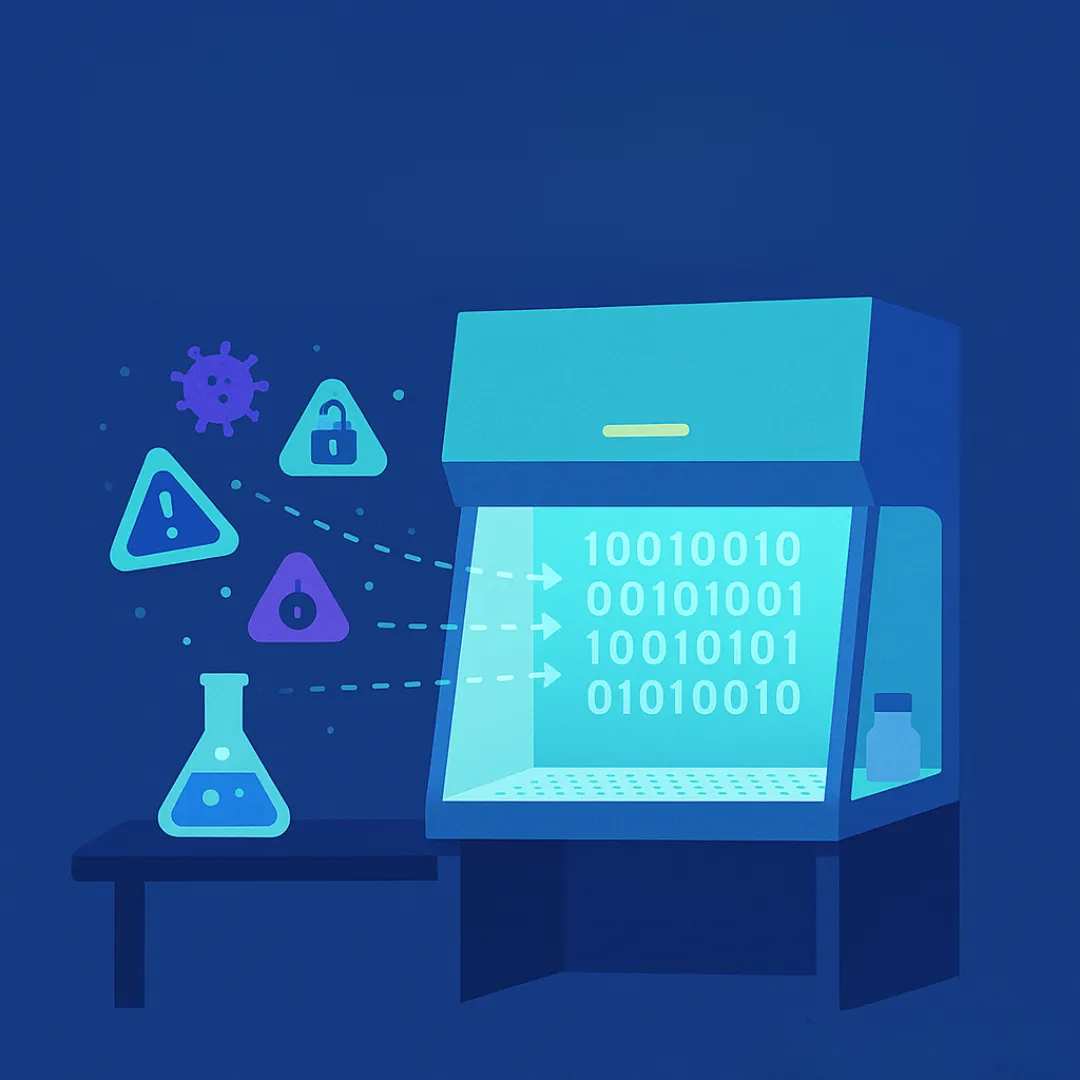
Your Lab Network Is Like a Biosafety Cabinet — Keep Digital Contaminants Out
Table of Contents
A Biosafety Cabinet for Your Data
How Contaminants Get In – Digitally Speaking
Keeping Your Digital Cabinet Clean
Imagine this: you’re handling sensitive biological samples in your lab. Would you work without a biosafety cabinet? Of course not. You use it to keep contaminants out and your samples safe.
Your lab’s IT network deserves the same kind of protection.
Just like pathogens can compromise a cell culture, viruses, malware, and unauthorized access can compromise your systems—putting patient data, research results, and even your operations at risk. The good news? The same mindset you use in the lab applies to your technology, too.
Let’s break it down.
A Biosafety Cabinet for Your Data
In a lab, a biosafety cabinet creates a controlled, filtered environment. It blocks external contaminants while allowing you to work safely with sensitive materials.
A well-designed lab network does the same:
It filters traffic, so only authorized users and safe data can get in.
It creates segmentation, separating critical systems (like your EMR or research databases) from general-use computers.
It runs constant air checks (a.k.a. monitoring) to detect anything that shouldn’t be there.
How Contaminants Get In – Digitally Speaking
You wouldn’t open your biosafety cabinet door mid-procedure or let untrained staff touch live cultures. Yet that’s essentially what happens when:
Staff connect to lab systems on personal, unsecured devices.
Outdated software goes unpatched.
Wi-Fi networks are open or poorly segmented.
There’s no clear record of who accessed what, when.
These are digital contaminants—and they’re just as dangerous.

Keeping Your Digital Cabinet Clean
Here’s how to apply biosafety-level thinking to your IT network:
Isolate critical systems
Think: BSL-3 protocols. Research servers, PHI databases, and regulatory systems should live on their own secure subnetworks—away from general browsing, email, and less protected devices.
Use access control and MFA
Only trained, authorized individuals should touch your most sensitive systems. Use role-based access and multi-factor authentication (MFA) to enforce that.
Monitor and audit constantly
Just like airflow monitors alert you to contamination risks, network monitoring and audit logs tell you when someone’s poked a hole in your system—and help you fix it fast.
Run drills and backups
Practice for digital emergencies like you do with fire drills or contamination response. Regular disaster recovery testing ensures your backups are there (and usable) when it counts.
A Lab Partner for Your Network
You wouldn’t buy a biosafety cabinet from a generic vendor with no lab experience. So why rely on a general IT provider for your lab network?
At Xyntris, we specialize in IT systems for clinics and research teams—meaning we understand the compliance pressures, data sensitivity, and scientific workflows that drive your work. We help you design your network like a biosafety cabinet: contained, compliant, and contamination-free.
Ready to Upgrade Your Digital Biosafety?
Let’s chat about how Xyntris can help you:
Assess your current “lab network hygiene”
Segment and secure your most sensitive systems
Set up monitoring, audit trails, and compliance-ready infrastructure


